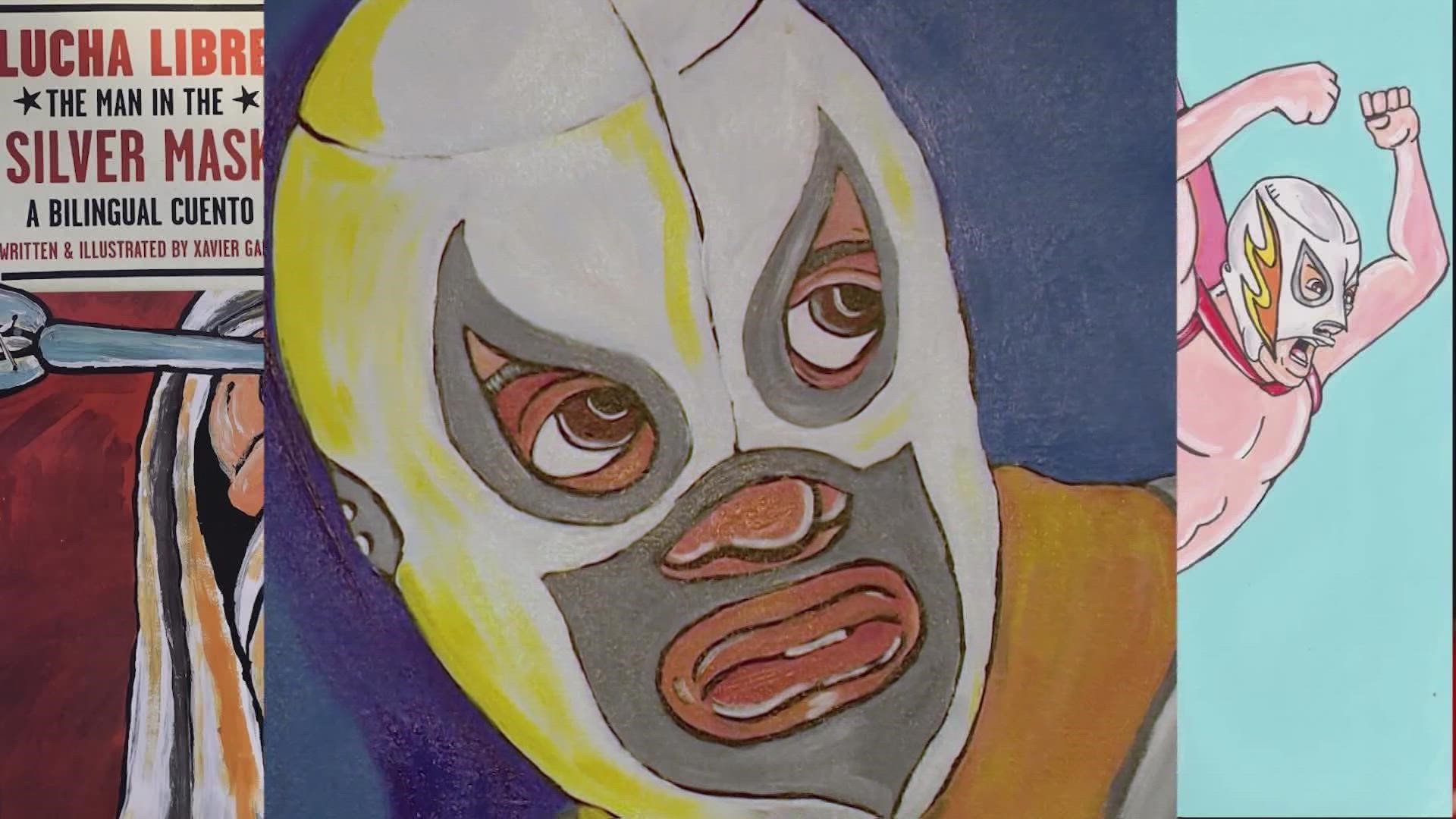SAN ANTONIO — Xavier Garza has used words and images to tell the stories of south Texas for decades.
The writer, illustrator and art teacher was born in the Rio Grande Valley before moving to San Antonio with his wife 20 years ago. Since then he’s published more than 20 books, mostly aimed at children and young adults.
Garza says his books and illustrations reflect the stories he grew up hearing in the region, calling them an ode to the Hispanic culture that influenced so much of these stories.
“I focus primarily on children's books and young adult books that deal with Hispanic and Latino themes,” he says. "(They encompass) a lot of the stories that I heard as a kid growing up—los cucuys, also lucha libre, a lot of the stuff that growing up in the Rio Grande Valley and in San Antonio are part of our culture and who we are.”
For Garza, words are only half of the equation. He is also a talented illustrator whose style started to take shape when he was a young boy influenced by comic books and luchadores.
“I always loved to draw since I was a little kid,” he says. “My first canvases were brown paper bags.”
“But I also grew up surrounded by storytellers. My father, my grandfather... I never met my great-grandfather, but everybody told me he was a great storyteller. So I kind of developed the idea of storytelling myself as a kid. What I tell everybody is the only thing that I do differently from what my grandfather or my dad or my great-grandfather did is that I write. I tell it, I'm a storyteller, but I write it down.”
Crafting these stories that craft young minds of the next generation is something that brings joy to Garza. He says his goal is to continue passing on these stories that have been told in Hispanic families for hundreds of years, using words and images as his primary tools.
“I combine them together to create books that, hopefully, when kids read them, they can relate to them and then they know their story is my story.”
When asked, “Why luchadores?” his answer was simple.
“Well, think about it to a kid. They wear the tights, they wear the mask, they wear the cape. They're literally superheroes and super villains come to life," Garza said. "And we look at them and we create adventures in our minds about these masked heroes.”
However, his stories go far beyond just luchadores. Hispanic culture is more multifaceted than that, even when it comes to childrens' tales.
“We never got the wonderful bedtime story before we went to bed. No handsome prince, no beautiful princess. No, we got the story of a woman that drowned her children in the river and then came back as a ghost and stole other children,” he said, referencing the fable of La Llorona. “That's what I write about. That's the story that I tell. That's the experience that I relate (to). I tell students when I talk about their culture is, some of these stories are very old. Stories that were around when your grandfather was in diapers and even by then, they were already old. What I'm doing is I'm telling the story, keeping it alive. And they in turn will tell the story and they'll keep it alive.”
For Garza, keeping these stories alive is of great importance. He says they not only pass along valuable traditions, but can also serve to inspire a younger generation of Hispanics.
The stories “are a definition of who we are,” he says.
"In 10, 20, 30, 40 years, that writer, he or she is going to be gone. But that book is still going to be on a shelf somewhere. A kid is going to pick it up and they're going to read that story and look at those drawings, and you know what? They’ll realize that the story that the writer put into that book, they'll say, 'You know what, that's my story. And if he can do it, I can do it, too.'"
Garza said he also view his role as a cultural historian, building upon the stories and tales to help his community endure.
“Once the storyteller is gone, you kind of start to forget the story. But by writing it down, it becomes something that your kids will read, and your grandkids can read. That history, that story, brings a sense of pride, which is really what Hispanic heritage is about. It's about bringing forth this pride in our culture, our traditions, our music, our food—all the things that make us who we are.”
As Garza continues to teach art, he says he is also working on what will be his 21st and 22nd books. He says they will be part of his collection of scary stories.

